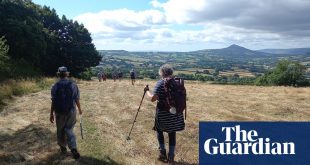Düsseldorf’s residents call their home “the 10-minute city”, because it rarely takes longer than that to get wherever you want to go. That’s a big claim for somewhere that boasts no fewer than 50 stadtteile (mini districts), but it’s backed up by a transit system of U-Bahns and S-Bahns that gets you around easily. And therein lies Düsseldorf’s great appeal: a small city of just over 600,000 inhabitants, with the infrastructure, the internationality and the sheer cultural heft of a much larger place. Add in the fact that more than 57% of its area is green space, and you can understand why a recent study ranked it the world’s sixth best city to live.
There’s plenty of wealth at play here, much of it being splashed along the tree-lined, canal-adjacent Königsallee, one of Germany’s most famous shopping streets. As the postwar capital of North Rhine-Westphalia (established in 1946), the most populous state of the nation, Düsseldorf became a hub for global business and finance, and the well-dressed glitterati who frequent the kilometre-long stretch of designer stores on “the Kö” have earned it a reputation for snobbishness.
That’s only a sliver of the story, however. Visit the Altstadt (old town) of an evening and you’ll find a lively-to-boisterous centre that cares more about good times than fine taste, and where the 300-plus pubs, breweries, restaurants and clubs are so closely aligned they like to call it “the longest bar in the world”. Established neighbourhoods such as Bilk and Flingern – and emerging ones such as Derendorf and Pempelfort – house diverse populations, blending daytime chic with an energetic nightlife. There’s a teeming counterculture courtesy of the city’s art school, and the largest Japanese community in Germany can be found in Niederkassel and along the Immermannstrasse (AKA Little Tokyo) where the ramen can’t be beaten.
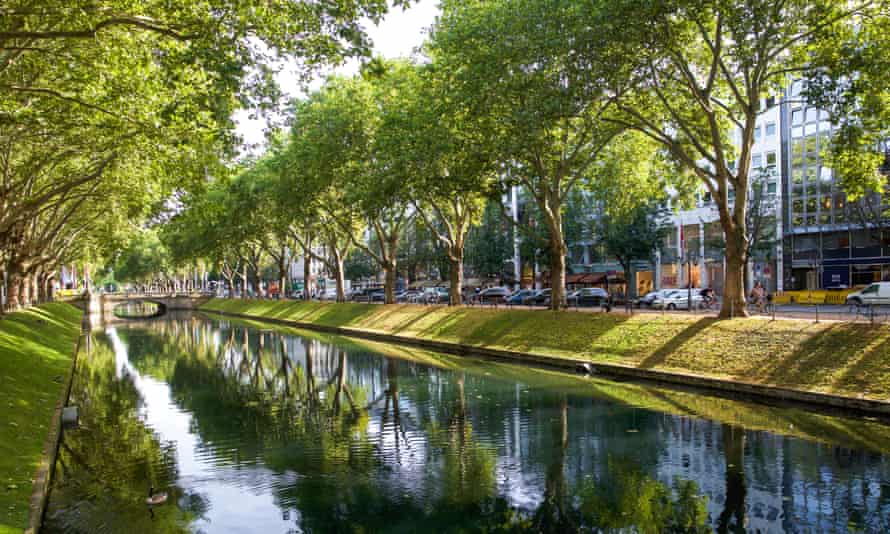
The imposing Rhine has long been a site of heavy shipping; today it’s a place for a walk or a drink, for skateboarding and eating ice-cream, courtesy of the promenade that runs along its east bank. At its southern end is Medienhafen, where the old harbour has been transformed into a vision of ultra-modernity. Since the arrival of Frank Gehry’s three bendy buildings at the end of the last millennium, a sort of architectural Epcot has emerged around them, where the interplay of the many new structures is as mesmerising as their individual designs, all overlooked by the needle-like Rhine Tower, with its panoramic viewing platform and rotating restaurant.
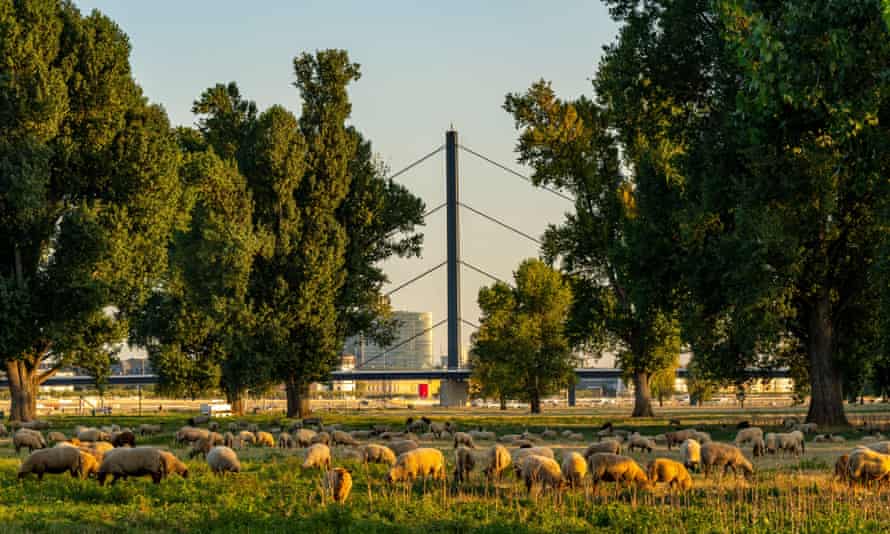
Across the river lies Oberkassel, the somewhat exclusive district where sheep still graze on the pretty waterside meadows; they keep the view neat and tidy for the owners of the pricey art-nouveau buildings that look out across them. There’s plenty of parkland to choose from wherever you find yourself in the city, however, from the expansive Hofgarten, home to the iconic curves of the Schauspielhaus performing arts centre, to the romantic ponds in front of the former state parliament building, the Ständehaus. There are also community gardens and allotments in the south of the city, where you’ll find cafes, beer gardens and even a petting zoo.
Where to eat
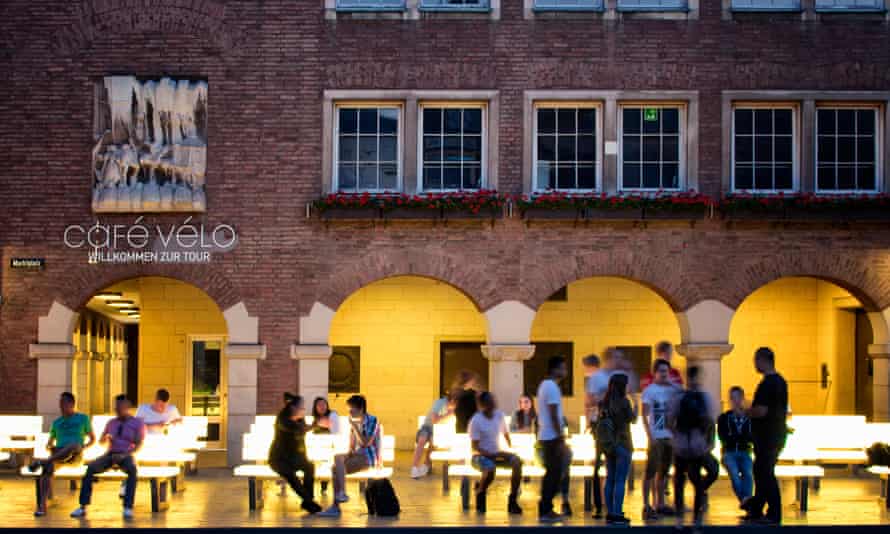
There’s a huge variety of cuisines to be enjoyed, from authentic Italian at San Leo in Altstadt, to Nashville hot chicken served with biodynamic wine at vibey Hitchcoq in Pempelfort. There’s also a strong trend for crossover and fusion food, be it Asian-Mediterranean at Bar Olio, French-Rhenish at Fleher Hof, or Waya Kitchen, where the “Asian-North American-Latin” soul food includes teriyaki chicken sliders and Korean schnapps. You’ll find excellent Japanese food all over the city, not only on the Little Tokyo strip, and Nagaya, in Stadtmitte, has a Michelin star.
The daily market at Carlsplatz is a great place to pick up a coffee and pastry or a bite for lunch; and on Lorettostrasse in Unterbilk the independent boutique stores are punctuated with some of the best casual restaurants in the city. Chef Murat Avcioglu at Noa cooks with vegetables he’s grown in his own garden, while at Rob’s Kitchen you can enjoy gastronomic cooking at bistro prices.

It’s hard to leave Düsseldorf without having seen – or tasted – the altbier of which the Rhineland is justifiably proud. There are five brewpubs creating this “top-fermented” beer, most in Altstadt, where the customers accompany their drinking with traditional dishes such as sausages, potato salad and enormous knuckles of pork. For historic surroundings, try the cavernous bar-rooms of Uerige – or for a more modern take, microbrewery Brauerei Kürzer is the true baby of the bunch, at only 12 years old.
Culture

The Kunstakademie has had a profound influence on the city’s arts and its outlook. In the 19th century, this fine arts school was renowned for its landscape painters; in the 20th, for its photography, and for the teaching of sculptor and activist Joseph Beuys. Today it continues to foment a heady mix of both mainstream and underground culture, and the sheer quantity of contemporary art collections and galleries mean that Düsseldorf punches far above its weight on the international stage. At Grabbeplatz you can walk straight out of the three-storey Kunstsammlung K20, with its Kirchners, Klees and Klimts, and into the contemporary exhibition space of the Kunsthalle, while at K21 (the Kunstsammlung’s second location), you can climb around the inside of the former parliament building’s glass roof on a vast spider’s web, as part of a longstanding installation by Tomás Saraceno.
The music scene has long been just as edgy and original: Düsseldorf was the birthplace of influential bands such as Kraftwerk, Neu!, La Düsseldorf, Rheingold and DAF, and the bars and clubs remain a pioneering space for all kinds of electronica. There’s usually plenty going on in Altstadt, particularly at weekends, and one of the best places to start is the laid-back Salon des Amateurs, which serves as the Kunsthalle’s cafe by day, and at night becomes a hip hangout for the arty crowd who spill out on to the steps outside. New venture Lucy’s Sky holds club nights in a speakeasy-style venue on Flinger Strasse; you have to ring a doorbell hidden between two shopfronts to gain entry to its colourful underground world.
Neighbourhood
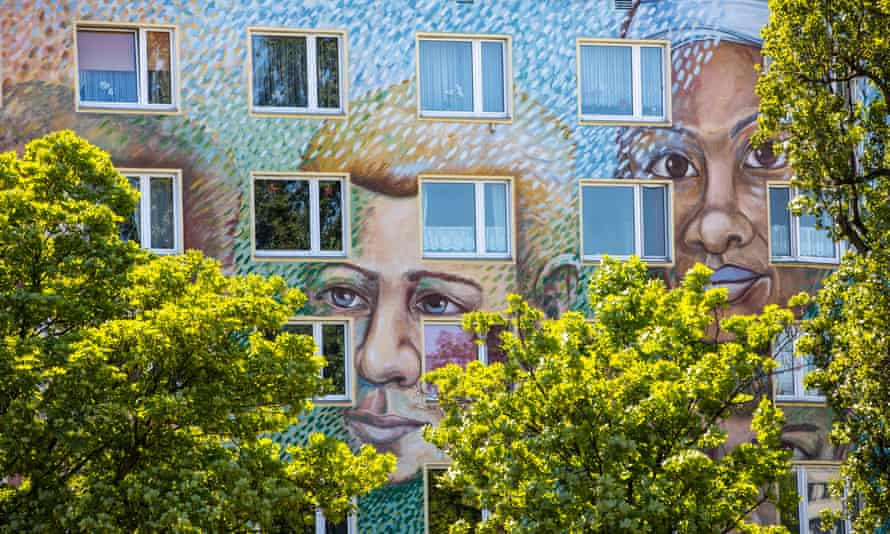
Of all Düsseldorf’s neighbourhoods, Flingern makes for a particularly fascinating day out. It actually comprises two separate stadtteile, each with a distinct feel, from the quiet urban village of Flingern-Nord to the punkish attitude of Flingern-Süd. In the 80s the latter’s Kiefernstrasse was a notorious squat, home to anarchist gangs. Today its houses are the most vibrant in the city, their facades covered with colourful artworks chosen by the residents, who have built a lively alternative community here. An iconic punk and hardcore club, AK47, lives on in dingy glory, while just around the corner the hot new restaurant opening 5P Style serves artisanal burgers with truffle fries.
A 15-minute walk north brings you to Birkenstrasse and Ackerstrasse, the two roads at the epicentre of Flingern’s gentrified northern borough of leafy squares and independent cafes. Artists’ ateliers and galleries punctuate the run of vintage boutiques and upcycling shops; it’s the kind of place you can pick up a couture hat on one side of the street and a tattoo on the other. Among the many pleasant eateries Bulle Bistro, with its sister wine bar and cousin bakery stands out, while the fabulous cakes at Cafe Hüftgold deserve their claim to be “world famous in Flingern”.
Where to stay
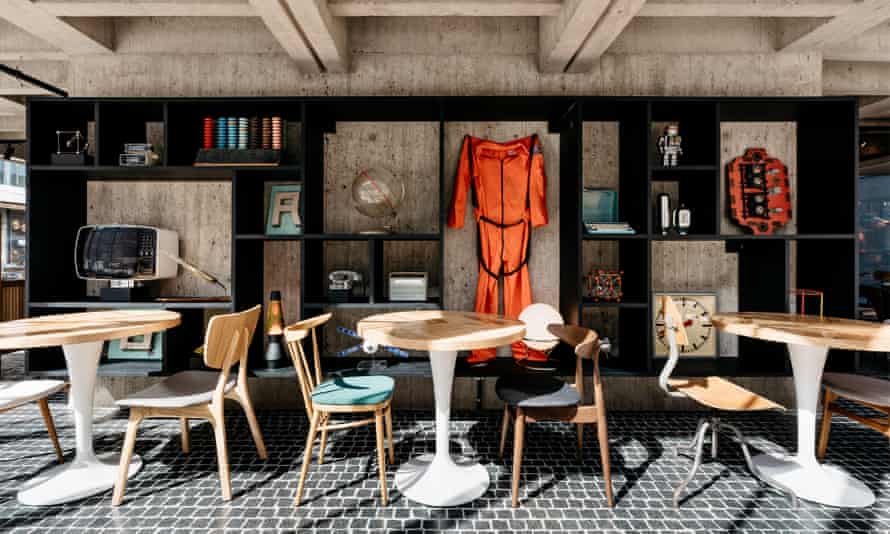
There hasn’t always been a lot of love for Düsseldorf’s postwar architecture, built at speed to restore a city that was largely destroyed by bombing in the second world war. But Ruby Luna (doubles from £85 B&B), opened in May 2021, has found plenty to celebrate in the 1950s style of its Altstadt location. The open lounge and restaurant are a sleek homage to mid-century space-age design, and the rooftop bar offers a truly great view over the city (if you don’t already have one from your window). There’s a tip of the hat, too, to the city’s love of rock music, with a Marshall amp in every room and a guitar ready for use at reception.
Travel pass provided by Interrail; prices start from €185 (for four days’ travel within a month). The trip was provided by Düsseldorf Tourismus
 Top Naija News – daily news updates in Nigeria | breaking news naija Welcome to Top Naija News, your ultimate destination for daily news updates in Nigeria. We are a dedicated news curation blog from various sources.
Top Naija News – daily news updates in Nigeria | breaking news naija Welcome to Top Naija News, your ultimate destination for daily news updates in Nigeria. We are a dedicated news curation blog from various sources.
